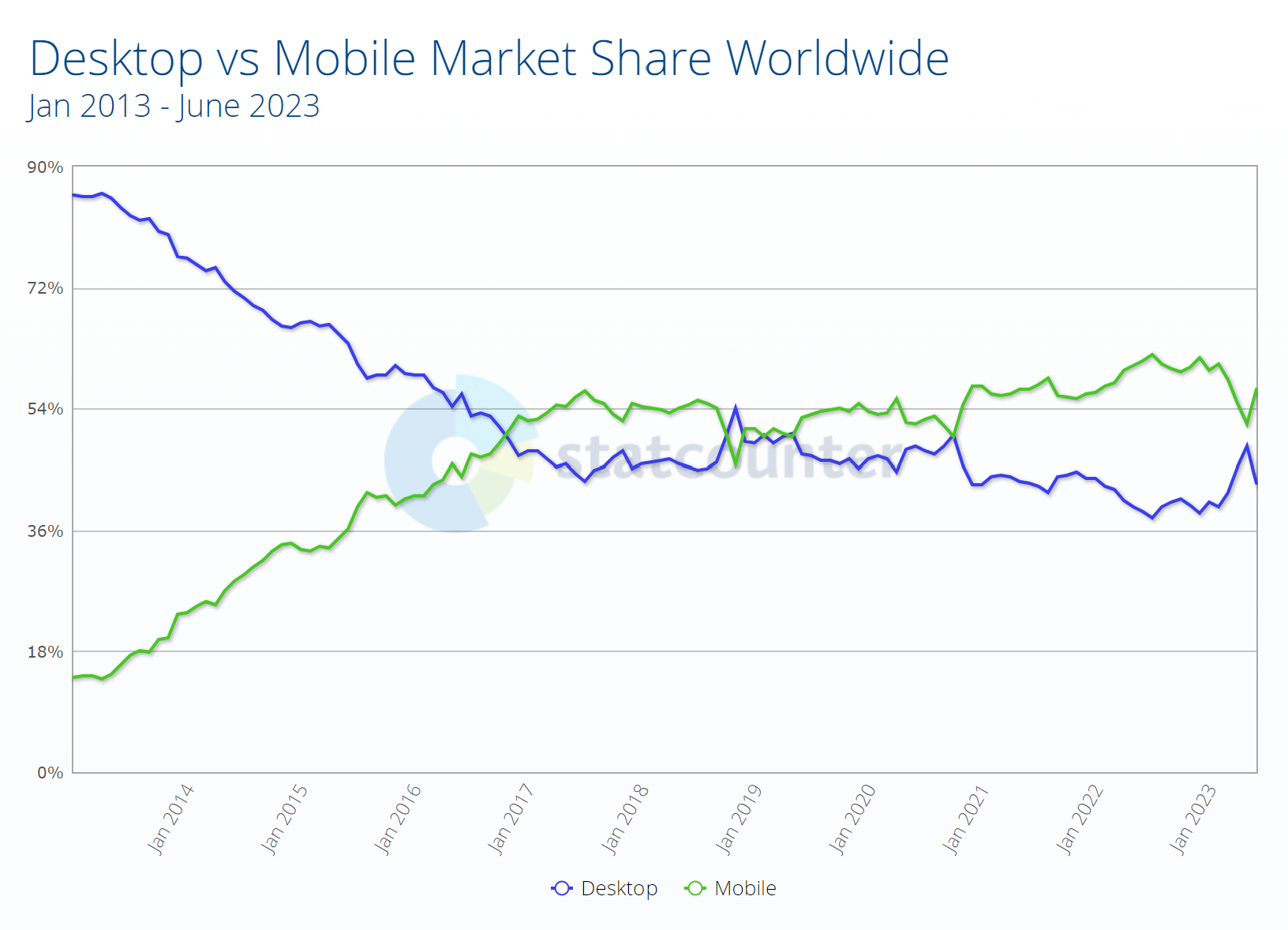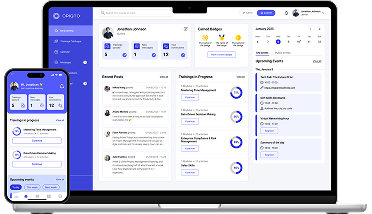Working people don't have time to learn. This was the case five years ago, and it still is. Josh Bersin calculated that an average employee could only spend 24 minutes per week learning.
At the same time, the rate at which skills change is at an all-time high, no matter the industry. Automatization and robotization, remote work, Big Data, and artificial intelligence disrupt the work landscape much faster than organizations can adjust. In fact, from 2015 to 2023, job skill sets have changed by around 25% and are predicted to change by 50% by 2027. So while people have less and less time to learn, the need for upskilling or even re-skilling gets bigger and bigger.

Moreover, this demand comes from employees themselves. A study by CEB (a division of Gartner) found that 57% of employees expect just-in-time learning to ensure they're proficient in their jobs.
Also, keep in mind that the absolute majority of the global workforce are deskless employees with even fewer opportunities to dedicate any substantial time to formal learning. As of 2018, they accounted for 80% of the workforce. Often, the only technology they can use to access training is a smartphone or a tablet.
What that leaves us with is that corporate training of 2023 needs to meet a person at the point of need with concise and actionable information they can use right away. And be mobile-friendly. That's where on-demand learning comes to a rescue.
Understanding on-demand learning
On-demand learning, also known as just-in-time or on-the-job learning, revolves around providing learners with immediate access to information and resources tailored to their specific needs. Unlike traditional learning models, which often follow rigid schedules and fixed curricula, on-demand learning empowers learners to choose what, when, and how they learn.
Several factors drive the shift to on-demand learning:
Personalization
Individuals can tailor their learning experiences by selecting topics, resources, and formats that align with their goals and preferences. This personalized approach fosters engagement and motivation, as learners have a sense of ownership and relevance in their learning journey.
Lifelong learning
Formal education is not enough to stay competitive, and lifelong learning has become necessary for personal growth and professional development. On-demand learning equips individuals with the tools and resources for continuous skill enhancement.
Targeted skill development
With on-demand learning, individuals can focus on acquiring specific skills or knowledge relevant to their immediate needs or professional aspirations. Rather than going through an entire course or program, learners can access specific modules or resources directly addressing their skill gaps, saving time and effort.
Convenience
Traditional learning often requires learners to adhere to fixed schedules and physical attendance. On-demand learning eliminates such constraints, allowing individuals to learn at their convenience, whether while on the task, during a commute, in spare moments, or after work hours. This flexibility is precious for individuals with busy schedules or those juggling multiple commitments.
Immediate access
With on-demand learning, a user can access information instantly. Whether it's an article, video tutorial, or interactive module, learners can quickly retrieve the specific content they need, enhancing efficiency, saving time, and immediately putting new knowledge to use.
On-demand learning effectiveness
Beyond its inherent flexibility and convenience, on-demand learning offers a range of advantages that enhance learning outcomes, such as improved knowledge retention and recall, enhanced engagement and motivation, and increased flexibility and accessibility.
Improved knowledge retention
According to a Research Institute of America study, students who took a course online retained 25–60% more material compared to retention rates of 8–10% in those who took the same course in a traditional classroom setting:

The ability to access learning materials whenever needed strengthens memory consolidation. Learners can revisit and review content as often as necessary, reinforcing their understanding and facilitating long-term retention. Additionally, learning at one's own pace allows for more effective information encoding into memory, enhancing recall when needed.
Enhanced engagement and motivation
On-demand learning has been shown to foster increased engagement and motivation among learners. When learners have control over their learning journey, they exhibit higher levels of intrinsic motivation, leading to deeper engagement and a desire to explore the subject matter further. The interactive nature of many on-demand learning platforms, such as quizzes, gamified elements, and multimedia content, further enhances engagement and enjoyment.
Optimized learning experiences
Research supports the idea that personalized learning promotes better learning outcomes. By allowing learners to select topics, resources, and formats that resonate with them, on-demand learning taps into their intrinsic motivations, optimizes comprehension, and fosters a deeper understanding of the subject matter. The ability to adapt the pace of learning, skip familiar content, or explore specific areas of interest contributes to a more efficient and effective learning process.
Mobile devices as an on-demand learning catalyst
Smartphones and tablets are affordable and available everywhere, making them the primary device for internet use. In June 2023, mobile devices accounted for approximately 57% of global internet traffic, surpassing desktop computers, with a third of all adult Americans constantly online. This shift indicates that more people rely on their smartphones and tablets to access online content, including educational resources, giving mobile devices a pivotal role in on-demand learning adoption.

No wonder mobile devices have revolutionized on-demand learning — it's a match made in heaven. See for yourselves:
- Smartphones' unparalleled portability and ubiquity allow learners to carry their educational resources wherever they go, which makes them the go-to device for deskless workers.
- Mobile devices provide instant access to a vast array of educational resources and applications, not only web-based platforms and libraries but also a multitude of educational apps that cover subjects from languages and sciences to mathematics and coding.
- Even budget phones now can play almost any multimedia format and have high-resolution screens enabling learners to engage with interactive simulations, educational videos, podcasts, and even virtual reality experiences. This immersive learning promotes deeper engagement, understanding, and knowledge retention.
- Mobile devices have become a primary point of accessing social media platforms, discussion forums, etc., where learners can engage in joint projects, share resources, and participate in online discussions, enhancing their learning through active engagement and collaboration.
The shift from web and PCs to apps and mobile devices and increased screen time shows us where to meet the learner. Mobile is №1 candidate for solving for accessible, immersive, and collaborative on-demand training.
Best practices for leveraging mobile in on-demand learning
With the right strategies, mobile devices become powerful tools for effective on-demand learning experiences. No need to look far for an example: Duolingo, with over 500 million app downloads worldwide, LinkedIn Learning, Khan Academy, Coursera, and even TED Talks — all these platforms benefit largely due to tapping into mobile or making mobile their predominant channel. Here's what you can do to ensure a quality on-demand learning experience on mobile:
Curating high-quality and mobile-friendly educational content
First and foremost, ensure that your content is optimized for mobile devices, i.e., easily readable, searchable, and navigable, even on a smaller screen, responsive, and doesn't consume the whole bandwidth. And, of course, prioritize high-quality resources from reputable educational platforms, renowned institutions, and subject matter experts. Look for evidence-based research, peer-reviewed articles, and educational materials that are accurate, up-to-date, and reliable.
Leveraging mobile apps and platforms
Take advantage of the plethora of existing e-learning platforms and educational apps that align with learners' training goals and preferences. Look for solutions with interactive features, progress tracking, and adaptive learning capabilities to enhance engagement and effectiveness.
Incorporating multimedia for interactive learning
Seek out relevant educational videos and podcasts, as they can provide visual and auditory stimulation, making the learning experience more engaging and memorable. Explore interactive simulations, educational games, and augmented reality (AR) experiences that leverage the capabilities of mobile devices. These interactive elements promote hands-on learning, critical thinking, and problem-solving skills.
Employing gamification and microlearning techniques
Gamified learning that utilizes game-like elements, such as badges, leaderboards, rewards, and challenges, enhances motivation, engagement, and learning outcomes.
Another highly beneficial strategy is microlearning which delivers bite-sized chunks of content that can be consumed in short timeframes. Mobile devices are ideal for microlearning, as learners can access and complete mini-modules during brief intervals throughout the day. This approach enhances knowledge retention and accommodates busy schedules.
Promoting responsible device use
People spend hours on their phone and not always productively. To keep learners focused on their learning objective without making them spend too much time on a platform or an app, create a distraction-free learning environment by utilizing productivity apps, using notifications wisely, setting daily usage limits, and encouraging learners to set dedicated learning times, practice mindful device usage, and take breaks to maintain focus and prevent burnout.
By curating high-quality content, leveraging mobile apps and platforms, incorporating multimedia elements, embracing gamification and microlearning techniques, and drawing inspiration from real-world success stories, you are equipped to embark on an enriching journey of mobile on-demand learning that is engaging, efficient, and conducive to lifelong knowledge acquisition.
If you seek expert assistance in the conception, development, and implementation of ed-tech solutions, our team is here to help. We specialize in providing comprehensive services to organizations and businesses looking to leverage the power of on-demand learning.
Reach out to us today to explore how we can collaborate to create effective learning experiences, harness the potential of mobile devices, and empower learners to thrive in the digital age.
Published on July 18, 2023.
